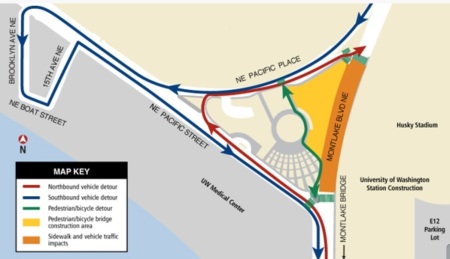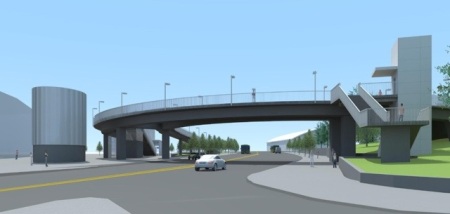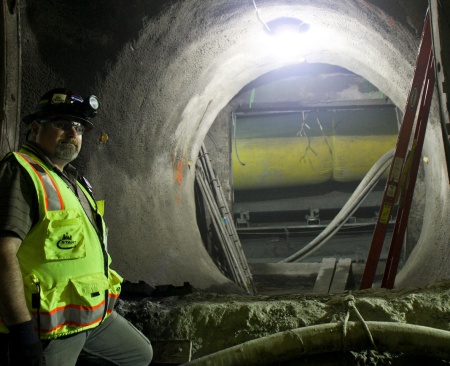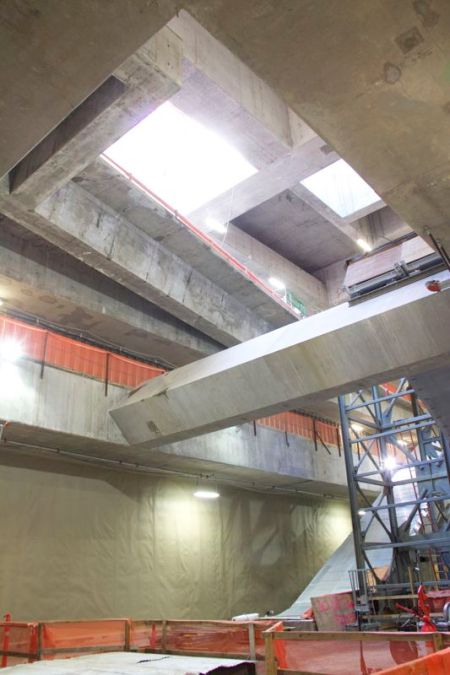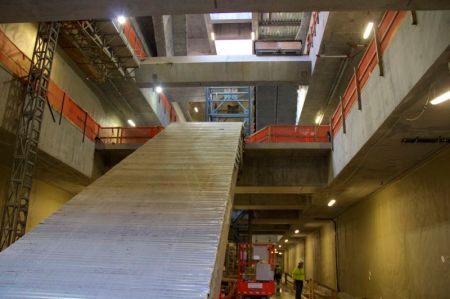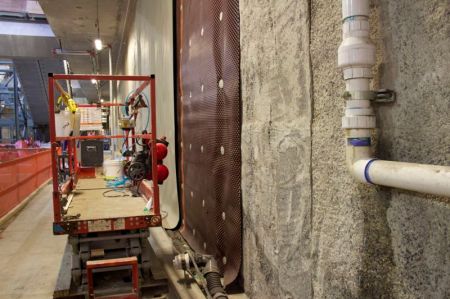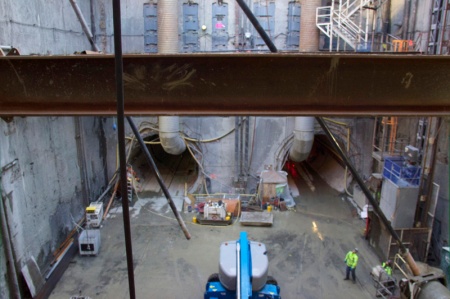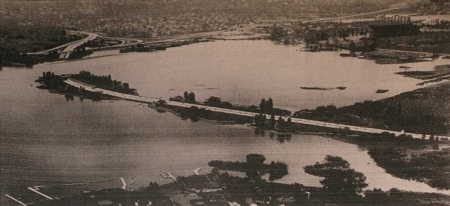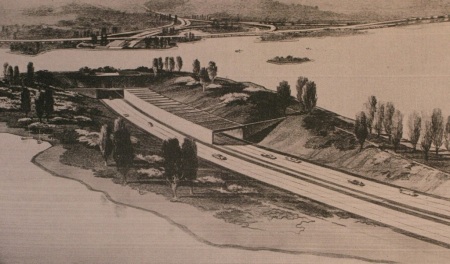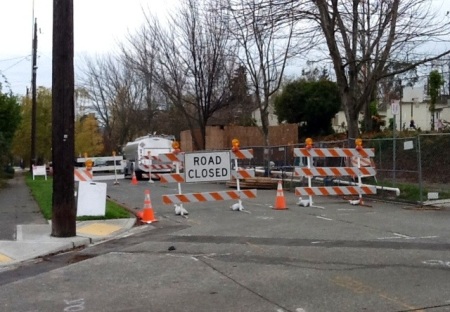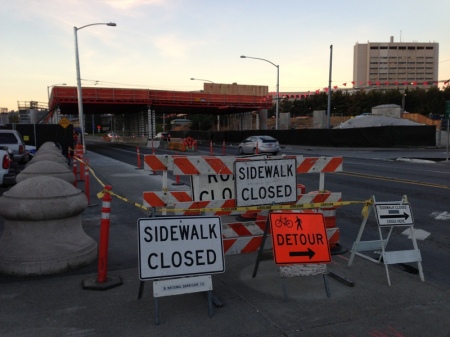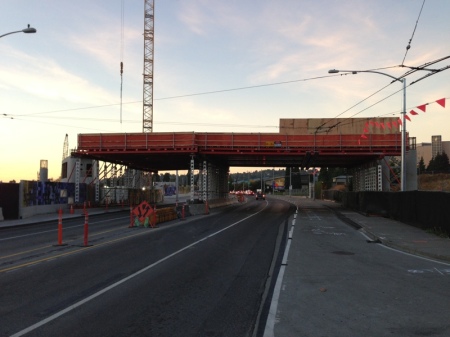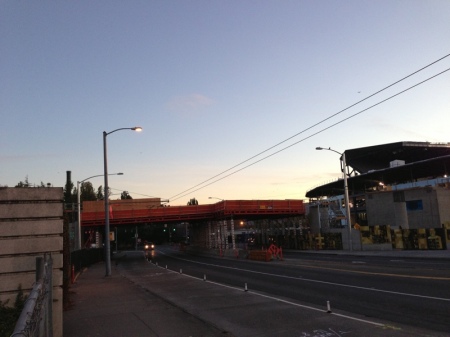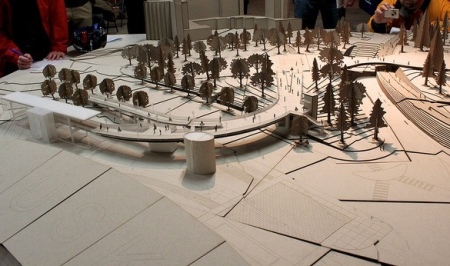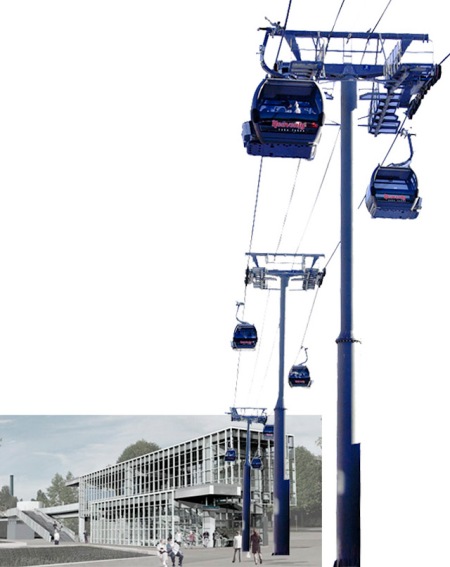
Image: Sound Transit + Flickr: Selbe B
Light rail in the far corner of campus — the 520 flyer stop a long walk from nowhere — lumbering buses merging left, blocking traffic — bus stops located far from UW Station. If transit is going to be a solution for the Montlake Mess, this tangled knot of bad connections will have to be untied. How to better move buses through Montlake? Don’t. Use an urban gondola instead.
A gondola could easily connect the 520 flyer stop on the future Montlake Lid to light rail at UW Station with door-to-door service. Imagine stepping off a 520 bus at Montlake, stepping onto a gondola car, riding it for two minutes over the Montlake Cut and arriving on the upper level of UW Station. An escalator/elevator ride down takes you to light rail below, or walk straight across the pedestrian bridge toward central campus.
Gondola lifts are proven people movers. They safely and comfortably travel over mountainous ski terrain the world over — and they’re increasingly being used in urban environments. London has one over the Thames. Medellin, Colombia has one. Portland has a cable car. St. Louis, Austin, and Chicago have considered them. Earlier this year, one was even proposed for South Lake Union.
But this isn’t just fantasy — it makes sense for Montlake. UW Station is about 1800 feet due north of the 520 flyer stop. That’s enough distance to discourage bus riders from walking — but it’s a modest distance for a gondola. A gondola’s cable system could easily sail over the clearance needed for tall ships in the Montlake Cut and it would be a lot less intrusive than a second bascule bridge. It’s the easiest way to move lots of people over difficult terrain.
How do gondolas compare as transit? Crystal Mountain ski area recently built a 1.3 mile gondola for around $6.5 million that carries up to 450 people per hour (900 with more cars added). The 1.3 mile South Lake Union streetcar cost $56 million and now carries about 2,500 people per day. Comparing capacity and ridership are apples and oranges, but the two systems are in the same ballpark — with the gondola costing a fraction of the price.
So rather than run routes over the Montlake bridge, buses could drop riders at a transit hub on the Montlake Lid, right in front of a gondola station with cars arriving every 30 seconds. Each car can carry a dozen or more people, moving an entire bus load to UW Station in a matter of minutes. What’s the actual transit ridership through Montlake? A recent Nelson/Nygaard study found 11,000 transit passengers cross the Montlake Bridge each day on some 600 buses. Thousands of those riders could instead transfer between UW and 520 along a continuously moving gondola — removing hundreds of left-merging buses from an already congested bottleneck.
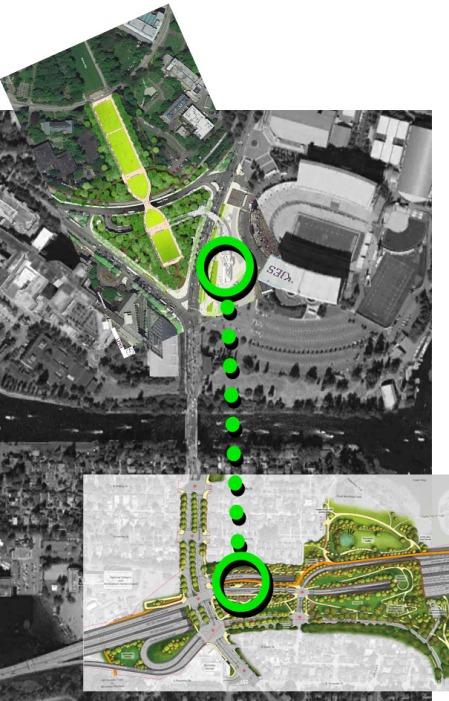
Nothing like a little bad Photoshop to stir the imagination…
It’s not hard to see how a simple gondola line solves Montlake’s problem of topography. A huge challenge for running light rail on the new 520 Bridge is how to connect it to UW Station — through an expensive tunnel (likely not feasible with little room for a second construction pit near Husky Stadium) or with a second bridge over the Montlake Cut? A gondola would effectively connect UW Station to a potential light rail stop on the lid south of the cut — and for a fraction of the cost of a bridge, tunnel, streetcar or whatever.
Fantasy or common sense? Extend the gondola 2000 feet north of UW Station to the E-1 parking lot and a severely underused University resource becomes a revenue-generating park-and-ride lot. A gondola station near the pedestrian bridge over Montlake Blvd NE would be a three minute walk from the HUB. A mile north of UW Station is University Village, a rapidly growing commercial and residential area. Why not just widen Montlake Blvd and run buses in HOV lanes? You could, but would they run every 30-seconds? A U-Village-to-520 gondola ride could travel 1.3 miles in 6.5 minutes with cars moving just 12 mph. U-Village to light rail in 4.5 minutes.
Connecting U-Village, UW Station and the 520 flyer stop — and possible future 520 light rail — with continuously moving transit seems worthy of study. If Crystal Mountain can build a 1.3 mile gondola line for $6.5 million, then Seattle ought to be able to do it for… $25 million? That would be roughly $75 million less than a second bascule bridge.
But the best reason for a gondola over the Cut? The view would be f*cking fantastic.



